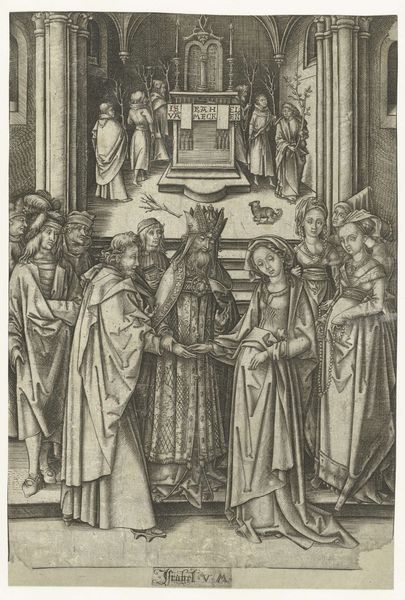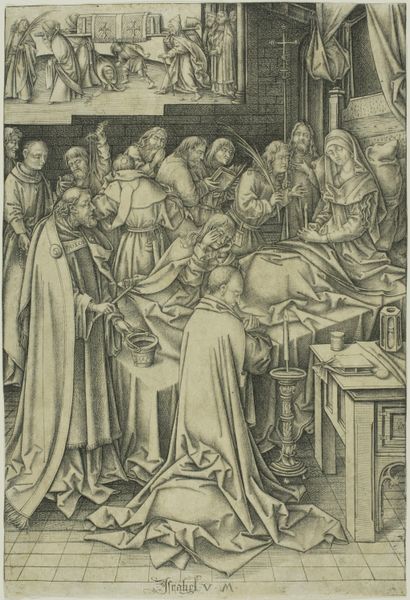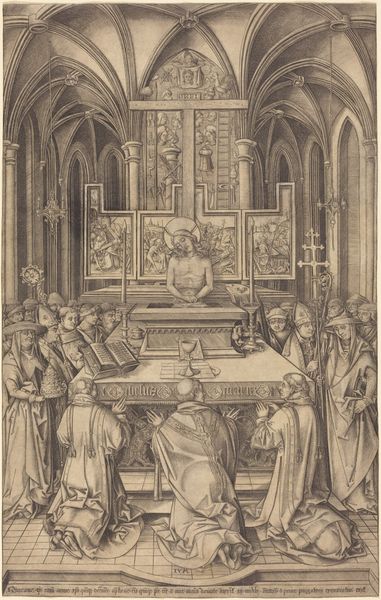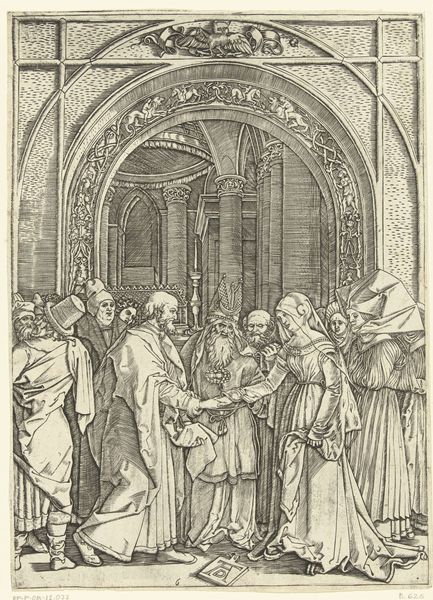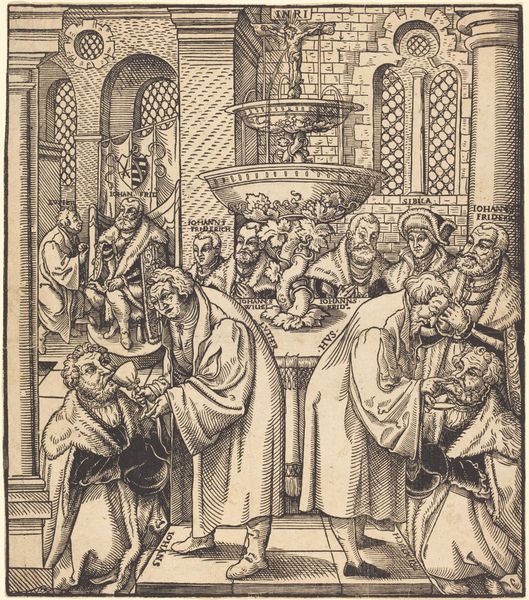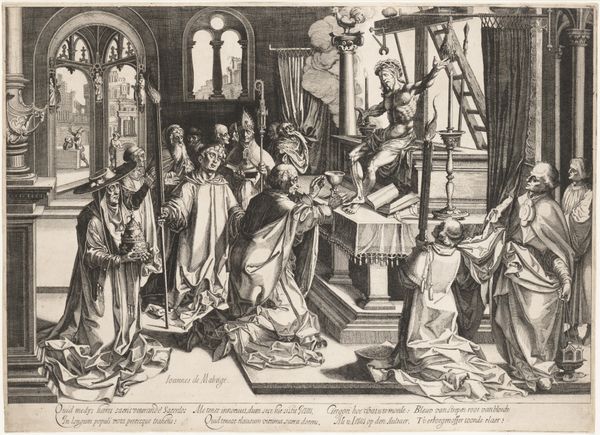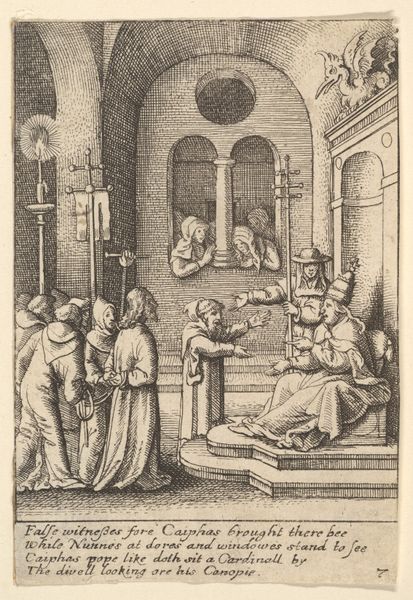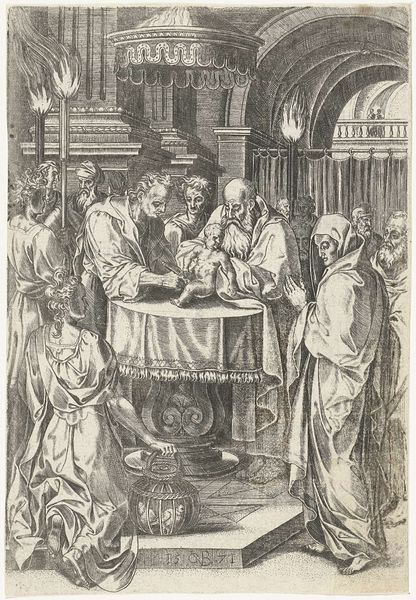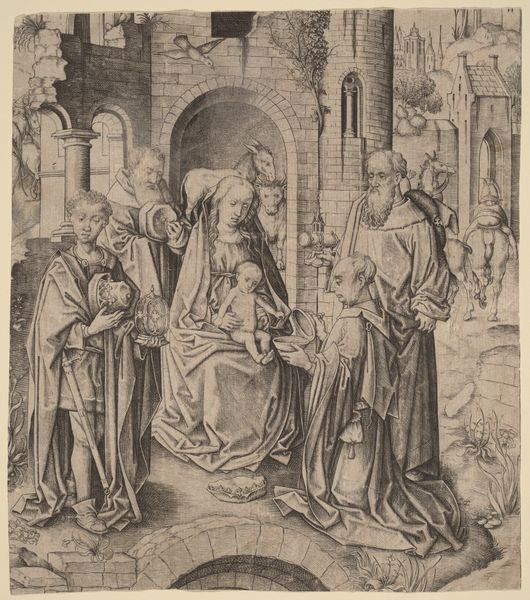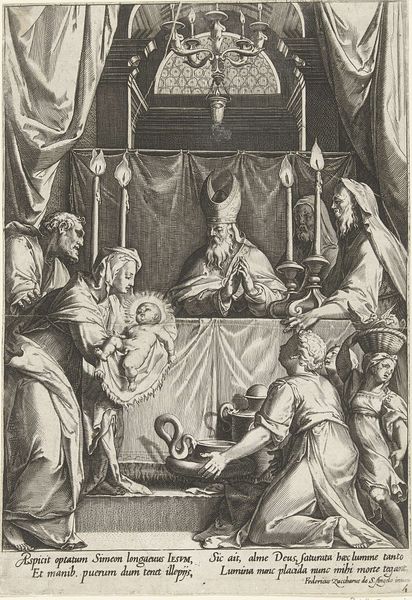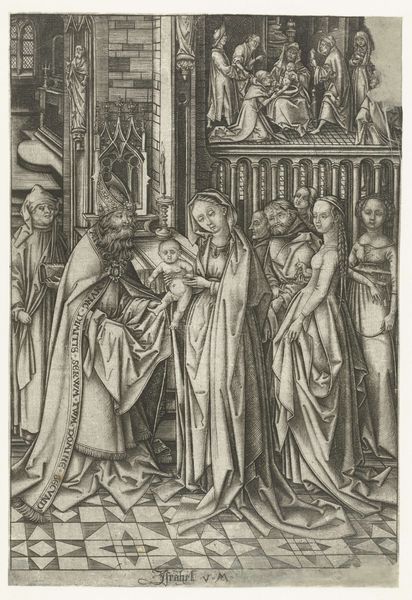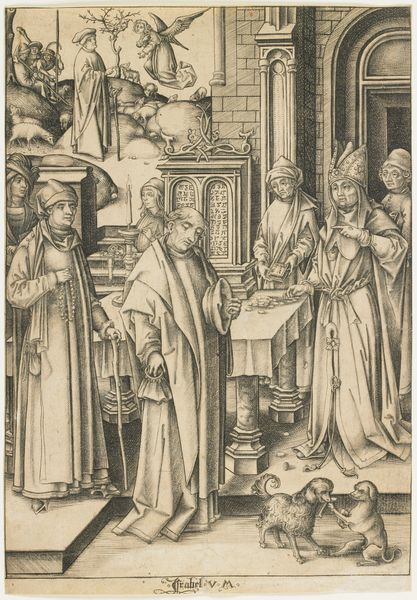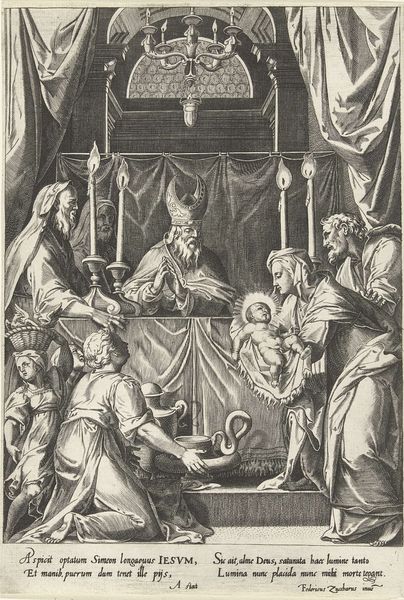
painting, oil-paint
#
painting
#
oil-paint
#
figuration
#
oil painting
#
genre-painting
#
history-painting
#
academic-art
#
italian-renaissance
Dimensions: 17 3/16 x 14 1/8 x 3/16 in. (43.66 x 35.88 x 0.48 cm) (panel)
Copyright: Public Domain
Editor: Here we have Jacob Jansz's oil painting "The Presentation in the Temple", circa 1490 to 1500, housed at the Minneapolis Institute of Art. The subdued colours create a rather solemn atmosphere. What cultural narratives do you find embedded within this piece? Curator: That's a great question. Considering the social and institutional contexts, this painting reflects the importance of religious rituals and the Church’s power in the late 15th century. How does the artist visually convey the sacredness of this event? Notice how figures on the right seem more elevated, which can suggest a priestly status and create a sense of formality befitting the space. Editor: So the arrangement of figures speaks to established social hierarchies? Curator: Precisely. And the temple setting, depicted with Romanesque arches, isn't just an architectural detail. What does that style evoke for you? Editor: A connection to ancient authority, perhaps legitimacy of faith? Curator: Yes, which further solidifies the church’s power and the importance of its traditions at a period where humanist values and rediscovery of ancient classicism begin to question the traditional Church teachings.. The political message of images were carefully structured at the time to inspire both faith and obedience. This was at the heart of Counter-Reformation imagery. How fascinating is it that Jansz uses familiar religious subject matter to shape a message of social compliance. Editor: I never considered how potent the backdrop could be. It completely alters my reading. Curator: It makes one consider how art is a deliberate construct embedded within historical moments. Hopefully, you found my Historian viewpoint helpful!
